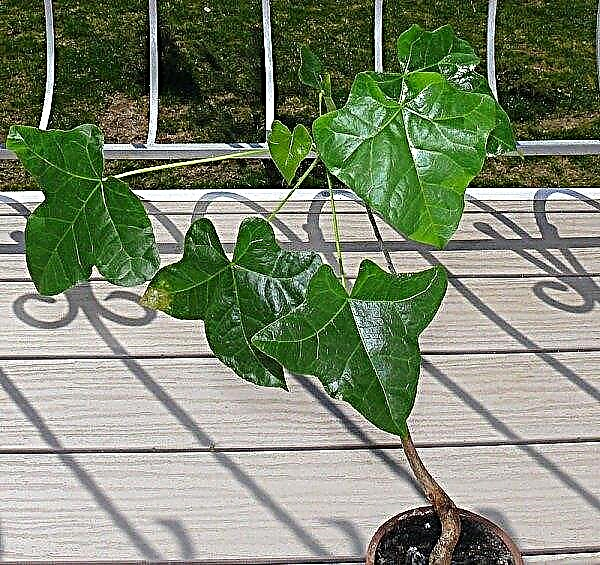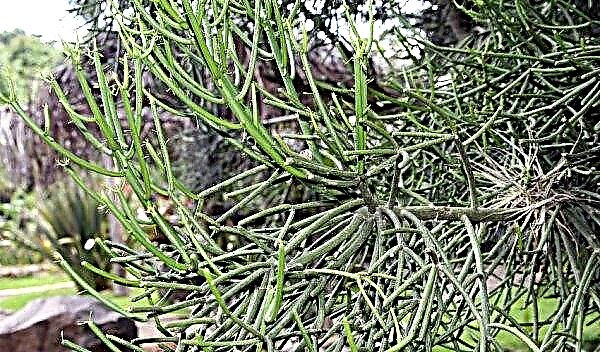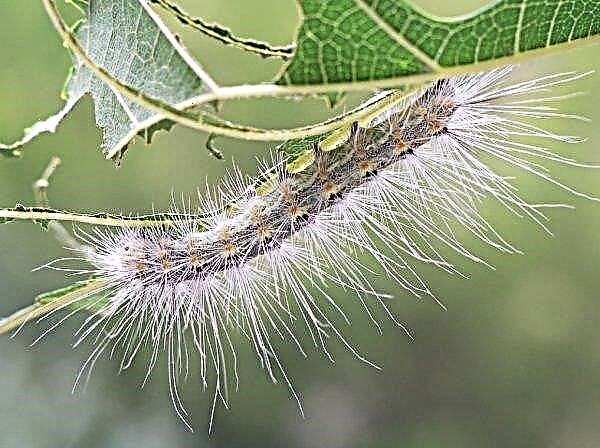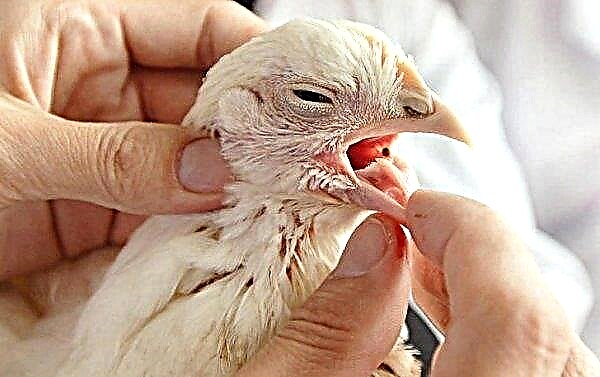Neomarika - a flower from the subtropics, similar to a garden iris. It does not require special care and conditions for growing, perfectly decorates and enlivens any interior. Consider how to choose the right place to grow the plant, how it multiplies, what difficulties can arise and how to deal with them.
Botanical description of the plant
Neomarica is a perennial ornamental plant of the Iris family native to the subtropical regions of South and Central America and West Africa. It has flat, lanceolate leaves 30 to 160 cm long and 1 to 4 cm wide. The color of the leaves is dark green.
Neomarika blooms in spring - large flowers located at the end of the arrow. The diameter of the flowers is about 5 to 10 cm. The shape of the flower is similar to iris. A flower lives only 24 hours, after wilting a baby forms in its place. The arrow with the baby rushes to the ground and takes root: this is how the flower multiplies.
| Root system | surface, branched |
| Stem | long, flat |
| Leaf shape | flat, lanceolate |
| Leaf color | dark green |
| Flower shape | six alternating petals, located on two tiers (like an iris) |
| Flower color | white, dairy with blue and purple, lavender |
Did you know? The neomarica is named after the ancient Greek river nymph Marika.
Main types
In nature, there are more than two dozen species of neomariki. But only two main types are used as cultivated plants:
Slender - a sprawling large bush about 100 cm high. The leaves can reach 1.5 m in length, the color is bright green. The flowers are large, with a diameter of 6 to 10 cm, light milky or with a golden hue. On one pedicel, up to 10 flowers gradually bloom.North - the bush is slightly more compact, its height is up to 80 cm. The length of the leaves is 60 cm. The flowers are fragrant, 6–8 cm in diameter, grouped by 4–6 pieces on each peduncle. Petals of flowers of a bright violet or blue shade.
A plentifully flowering variety is popular - the neomarica is faithful. Its feature is a beautiful color of leaves - green with white vertical stripes. It blooms very abundantly and for a long time, in the place of wilted flowers new buds immediately appear.
House growing conditions
Neomarika is grown at room temperature, only in winter it is necessary to provide it with a cooler place (8–10 ° С) so that it rests and blooms more abundantly in spring. The plant does not require special conditions and care, quite unpretentious, loves a bright, sunny place with moderate humidity.
Location selection and lighting
A well-lit place with direct morning and evening sunshine is ideal. The flower will develop normally in ambient light, it is important to protect the neomarik from the scorching sun by shading in hot summers.
Temperature and humidity
Room temperature of about + 20–25 ° С and average humidity in the range of 50–60% are ideal conditions for neomariki. She does not like high humidity and easily adapts to dry air. Spraying is necessary only in hot summers and during heating in winter: only leaves are subjected to this procedure, do not get on buds and flower petals.
Home care for neomarica
Neomarika does not need special care, but it is important to create favorable conditions and prevent sudden changes in temperature. Proper and timely watering and top dressing are the main components of a successful plant development.
Watering
The frequency of watering depends on the room temperature. In the hot season, it is necessary to water often and abundantly, especially at the time of flowering - about 2-3 times a week. With the advent of cold weather, the frequency and profusion gradually decreases. Excess moisture adversely affects the root system. In autumn, it is enough to water once every 7 days. In winter, during the dormant period, watering is carried out even less often, but they do not allow the soil to dry out. It is recommended to use settled soft water at room temperature. It is convenient to water the flowers using a watering can with a long nose.
Important! You can soften water for irrigation by adding a little lemon juice to it.
Top dressing
It is enough to feed the plant during the period of active growth and flowering. The first top dressing is made in the spring in April, then every 3-4 weeks, until October. It is advisable to use fertilizers for orchids or other complexes of mineral fertilizers. Neomarika does not need large amounts of fertilizer, as it grows in the wild on infertile soils.
Pruning
Pruning is only needed to remove dry or diseased leaves and peduncles. For an aesthetic look and plentiful formation of new buds, it is recommended to remove the children.
Rest period
In October, the dormant period begins: the plant must rest in order to delight with lush and prolonged flowering next spring. During this period, the air temperature should not be higher than + 10 ° C, and the place should be well lit. The rest period lasts all winter.
Transfer
For successful and rapid development, it is recommended that young neomariks be transplanted once a year, carefully changing the soil. This process is carried out in the spring. For adult flowers, a transplant can be done every 2-3 years, if necessary, divide the bushes. Light soil with neutral acidity is suitable. It can be prepared by mixing peat, turf soil and sand in a ratio of 1: 2: 2. Since the root system of the plant is superficial, low and wide pots, preferably clay ones, can be used.
Light soil with neutral acidity is suitable. It can be prepared by mixing peat, turf soil and sand in a ratio of 1: 2: 2. Since the root system of the plant is superficial, low and wide pots, preferably clay ones, can be used.
The transplant process is as follows:
- Be sure to make a drainage layer of expanded clay at the bottom of the tank.
- Top up the soil, carefully place the plant, trying not to damage the roots, and fill the topsoil.
- The depth of planting of the stem should not exceed 5 cm.
- In conclusion, water the flower abundantly.
Important! Neomarika — poisonous plant, it is not recommended to place it in children's rooms and bedrooms.
Breeding
There are two simple ways to reproduce neomariki:
- dividing the bush;
- child sockets.
Dividing the bush
If you have a large overgrown bush, then it can be divided into parts and planted in a new pot. Each part must have several growth points for successful development. The root system is cut with a sharp knife, and the sections are treated with activated carbon to prevent infections. After planting, the care of each plant is no different from the usual.
Child sockets
The easiest way to reproduce - with the help of children, or daughter sockets. At the place of the flower, a baby forms, the peduncle bends down under its weight. It is necessary to prepare pots with a substrate and place them so that it is possible to pin the socket to the ground with a pin or wire. A small layer of soil is poured on top, so that the base of the baby is in the ground, and moisturize well. After 2-3 weeks, a root system develops in such a daughter outlet, after the appearance of new leaves, the peduncle can be carefully cut. Then they look after the same way as the mother plant.
Growing difficulties
Neomarica is disease resistant and rarely affected by pests. If proper care is present, then the flower normally develops and pleases with beautiful flowers and bright leaves. Consider the causes of problems and how to deal with them.
Why does not bloom
If the neomarica does not bloom, then perhaps she did not have a rest period in winter - the plant did not rest. It is necessary to provide wintering at low temperatures and enhanced lighting. Another reason is too much fertilizer or insufficient lighting.
Did you know? According to legend, a neomarica, or apostolic iris blooms only after the appearance of 12 leaves (number of apostles).
Disease
The plant rarely gets sick, but with high humidity, the root system can rot. To save him, you must:
- transplanted into another pot with new soil;
- remove rotten roots;
- treat with an antifungal drug.
 If it is too dry, then the leaves turn yellow, and the buds crumble. In hot weather, leaves can get burns from direct sunlight. To save, it is necessary to place the flower in a place with diffused light and ensure timely watering and spraying.
If it is too dry, then the leaves turn yellow, and the buds crumble. In hot weather, leaves can get burns from direct sunlight. To save, it is necessary to place the flower in a place with diffused light and ensure timely watering and spraying.Pests
The main enemies of the flower are spider mites and aphids. Ticks attack with increased dryness, creating a thin web on the back of the leaves. If you saw small bugs on the leaves - green or black, then a warm shower will help to save the plant. Rinse the leaves well and spray them with soapy water or an insecticide.
So, neomarika is able to decorate the interior with a bright green fan and fragrant flowers. It is not at all difficult to grow it at home: the plant does not require special care, the introduction of a large number of fertilizers, it multiplies easily and rarely gets sick.












